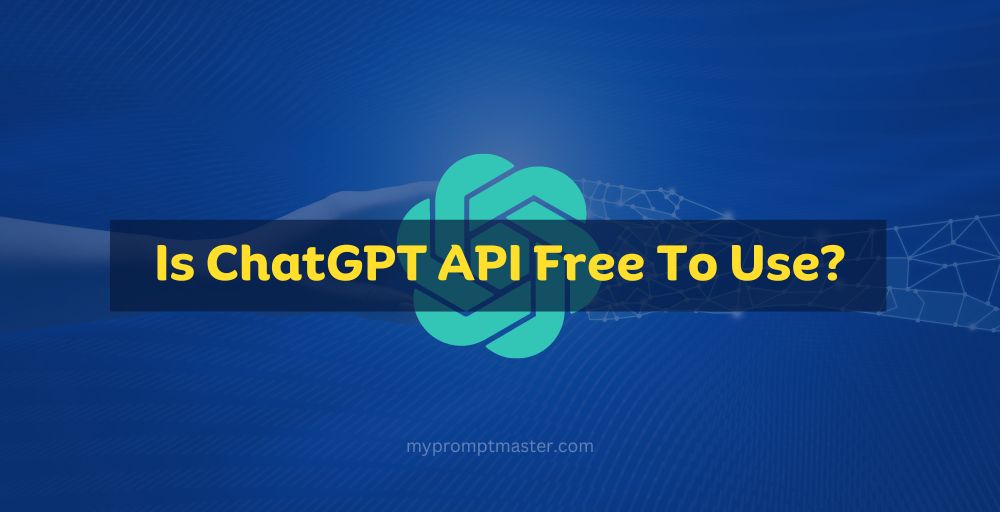No, ChatGPT API is not free. However, users do get a free credit of about $18 when they create an account on OpenAPI.
In recent years, OpenAI’s ChatGPT has garnered significant attention for its ability to generate human-like text responses.

Whether you’re an individual looking to enhance your writing skills or a developer interested in building your own applications, OpenAI offers two main options: the ChatGPT Plus subscription and the ChatGPT API. You can use ChatGPT pricing estimation tools to check the costing.
ChatGPT Plus Subscription
The ChatGPT Plus subscription is designed to provide an improved user experience for individuals. Priced at $20 per month, it offers several benefits beyond the free version of ChatGPT. Some of the notable features of ChatGPT Plus include:
- Reduced wait times: Subscribers experience shorter wait times compared to free users. This ensures a more seamless and efficient user experience.
- System message role: Users gain access to the system message feature, which allows them to provide high-level instructions to guide the conversation.
- Faster and better responses: With ChatGPT Plus, you can expect faster and more accurate responses from the model, enabling smoother interactions.
- Priority access to new features: Subscribers enjoy early access to new features and improvements as OpenAI continues to enhance the capabilities of ChatGPT.
- Easier access during peak times: During periods of high demand, ChatGPT Plus subscribers are given priority access, ensuring uninterrupted usage even during peak hours.
ChatGPT API
The ChatGPT API is targeted towards developers who want to integrate ChatGPT’s capabilities into their own applications.
Unlike the ChatGPT Plus subscription, the API comes with its own pricing structure, which can be found on the OpenAI website.
The ChatGPT API offers greater flexibility and customization options, allowing developers to tailor the model to their specific requirements. Key features of the ChatGPT API include:
- Custom integrations: Developers can seamlessly integrate ChatGPT into their applications, enabling dynamic and interactive conversations with users.
- Extended token limit: The ChatGPT API supports a maximum token limit of 4096 tokens per request, giving developers more freedom to generate longer responses.
- Language support: While ChatGPT is primarily designed for English prompts, the API offers support for multiple languages, expanding its usability across different regions and markets.
- Task management: Developers can leverage the API to handle specific tasks and automate interactions, making it suitable for a wide range of applications such as chatbots and virtual assistants.
- Collaboration with GPT-4-integrated chatbots: Integration with platforms like Microsoft Bing and ForeFront AI allows users to access ChatGPT’s capabilities for free through those chatbots.
Limitations of the ChatGPT API
While the ChatGPT API provides powerful tools for developers, it does come with certain limitations. Being aware of these limitations is crucial for leveraging the API effectively. Here are some key limitations to consider:
- Token limit: The default token limit for the API is set at 2048 tokens, with a maximum of 4096 tokens per request. Exceeding these limits can result in truncated or incomplete responses.
- Rate limits: Both free trial and paid users have rate limits that restrict the number of requests they can make within a specific time period. Hitting these limits may lead to errors until the limit is reset.
- Context understanding: ChatGPT may struggle to grasp context accurately, especially when it comes to understanding sarcasm, humor, or nuanced prompts.
- Generating long responses: The token limit can constrain the length of responses generated by ChatGPT, potentially limiting the depth and detail of the output.
- Accuracy of responses: While ChatGPT strives to provide accurate and relevant responses, it may occasionally generate answers that are not entirely accurate or aligned with the input prompt.
- Multitasking limitations: ChatGPT can handle only one task at a time, which means it cannot perform multiple tasks simultaneously within a single conversation.
- Multilingual support limitations: While the ChatGPT API offers multilingual support, its performance may vary for languages other than English, as the model’s training data is primarily focused on English.
- Handling complex tasks: ChatGPT’s ability to handle complex tasks that require in-depth knowledge or understanding may be limited, as the model’s training is based on a broad range of internet text rather than specialized domains.
- Security for sensitive information: ChatGPT is not specifically designed to handle sensitive information, so caution should be exercised when using it in scenarios that involve confidential or personal data.
It’s important to evaluate these limitations in the context of your specific use case and requirements to ensure that the ChatGPT API aligns with your project goals.
In conclusion, OpenAI’s ChatGPT offers two options for users: the ChatGPT Plus subscription for individuals and the ChatGPT API for developers. Each option caters to different needs, with the Plus subscription focusing on user experience enhancements and the API providing extensive customization capabilities.
By understanding the features, pricing, and limitations of these options, you can make an informed decision on how to best leverage ChatGPT for your own writing or development endeavors.

